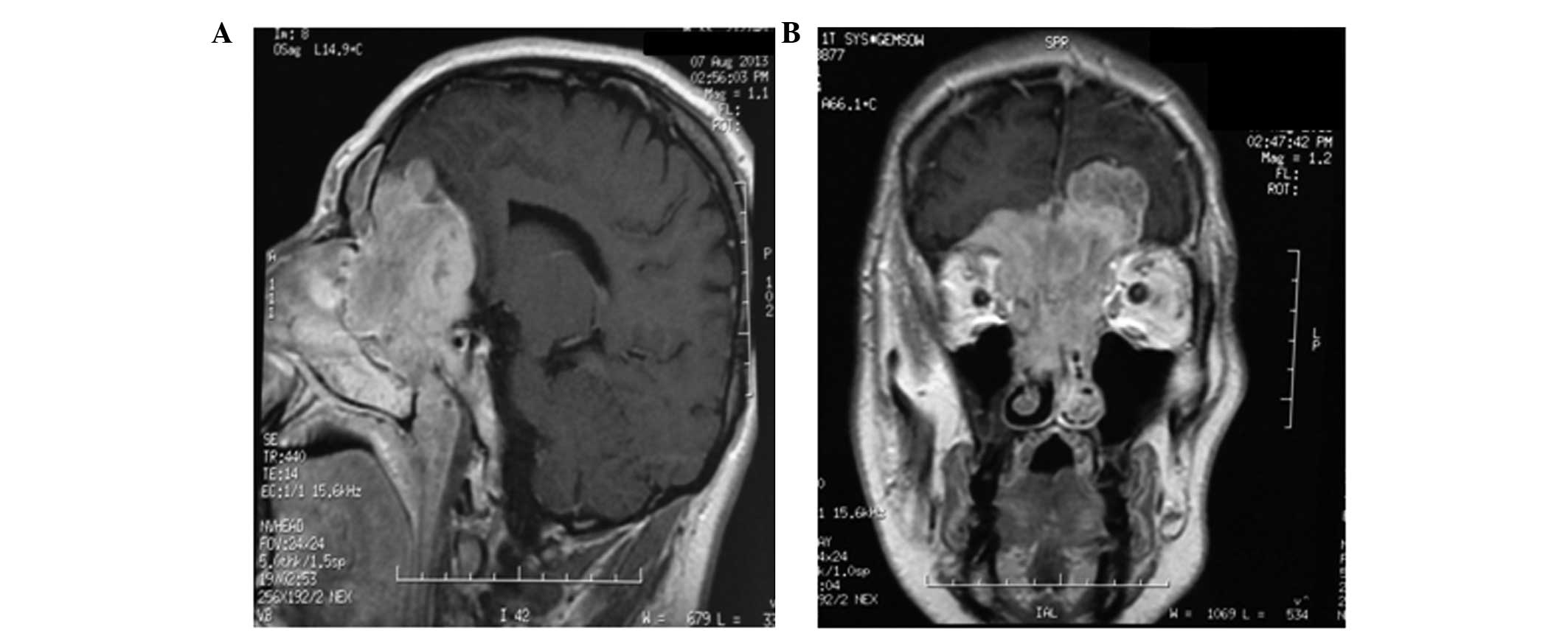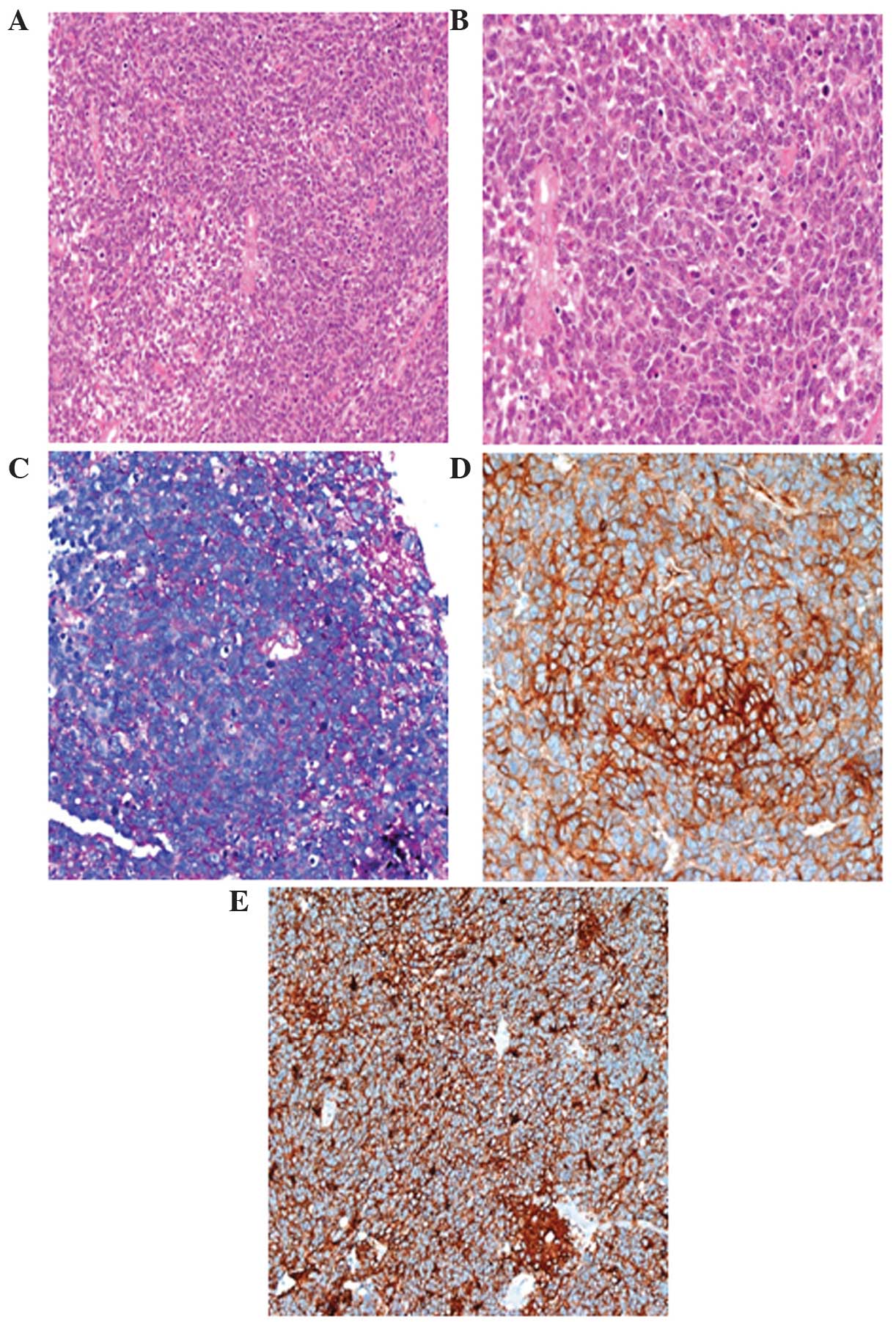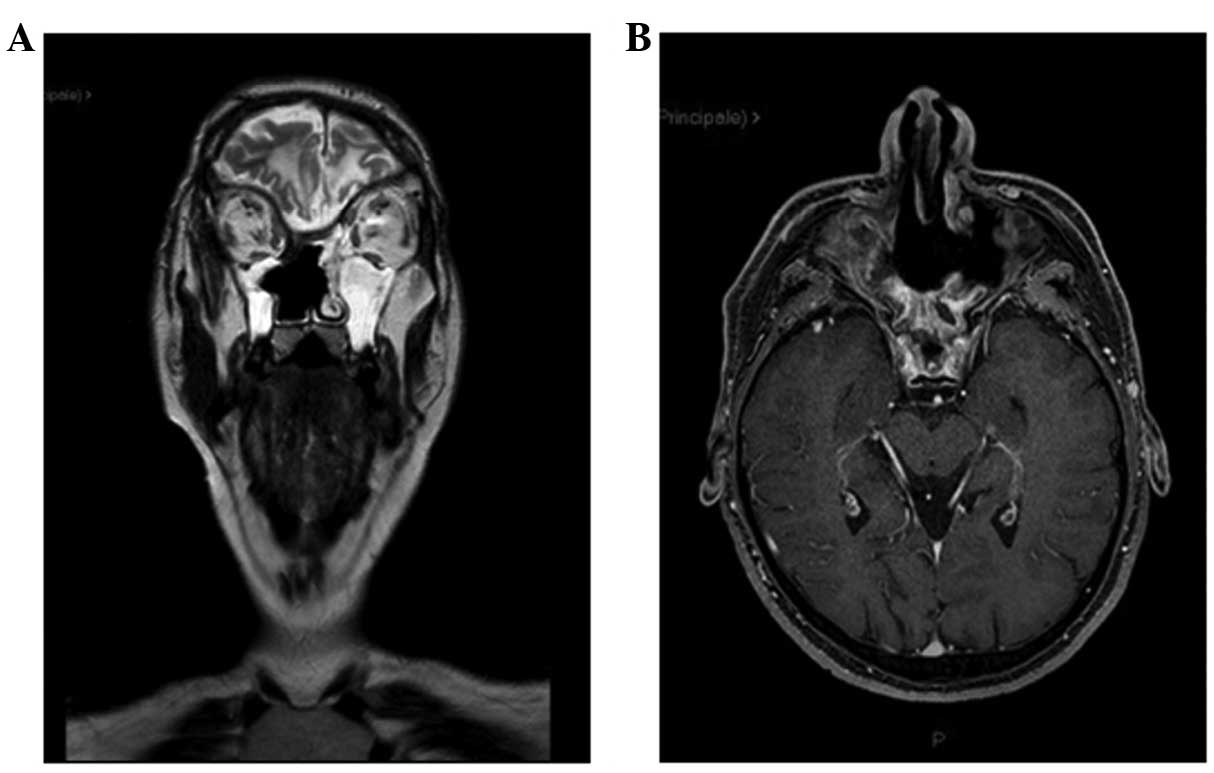Primary Ewing's sarcoma of the sinonasal tract, eroding the ethmoid and sphenoid sinus with intracranial extension: A rare case report
- Authors:
- Published online on: April 24, 2015 https://doi.org/10.3892/mco.2015.548
- Pages: 807-810
Metrics: Total
Views: 0 (Spandidos Publications: | PMC Statistics: )
Total PDF Downloads: 0 (Spandidos Publications: | PMC Statistics: )
Abstract
Ewing's sarcoma (ES) is an aggressive tumour that may present with skeletal and extraskeletal forms. The extraskeletal form is rarely encountered in the head and neck region and is extremely rare in the sinonasal tract. This is the case report of a ES of the ethmoid sinus with intracranial and orbital extension in a 33‑year‑old male patient who presented with anosmia, epistaxis, reduction of visual acuity in the left eye and headache. On otorhinolaryngological clinical examination and biopsy via flexible endoscope, the lesion was misdiagnosed as ethmoid sinus carcinoma. The subsequent magnetic resonance imaging (MRI) of the brain revealed a large mass (6x7 cm) eroding the ethmoid and sphenoid sinuses, extending beyond the orbits and occupying the anterior cranial fossa with a maximum extension of ~5 cm. The patient underwent surgical resection and the microscopic examination of the specimen established the diagnosis of ES (immunohistochemically positive for CD99, neuron‑specific enolase, CD56, synaptophysin, pancytokeratin, low‑molecular weight cytokeratins and vimentin. The periodic acid Schiff stain exhibited strong intracytoplasmic block positivity and fluorescence in situ hybridization revealed a t(22;11) translocation. first‑line chemotherapy was administered for 3 cycles; however, on restaging MRI, local disease progression was diagnosed. The patient received radiotherapy and second‑line chemotherapy for 6 cycles. At 15 months after the diagnosis, the patient remains recurrence-free and maintains a good functional status and quality of life.












